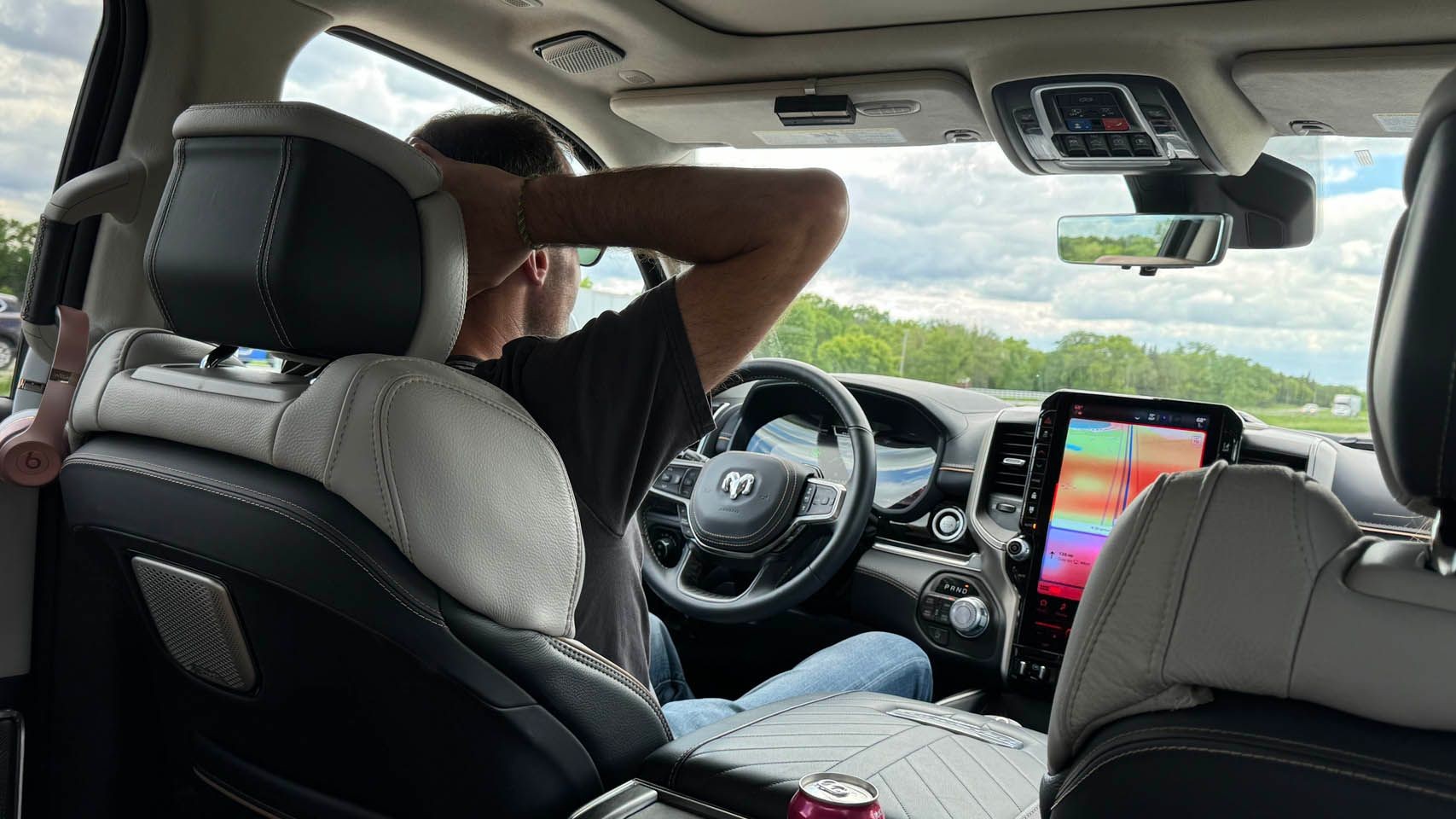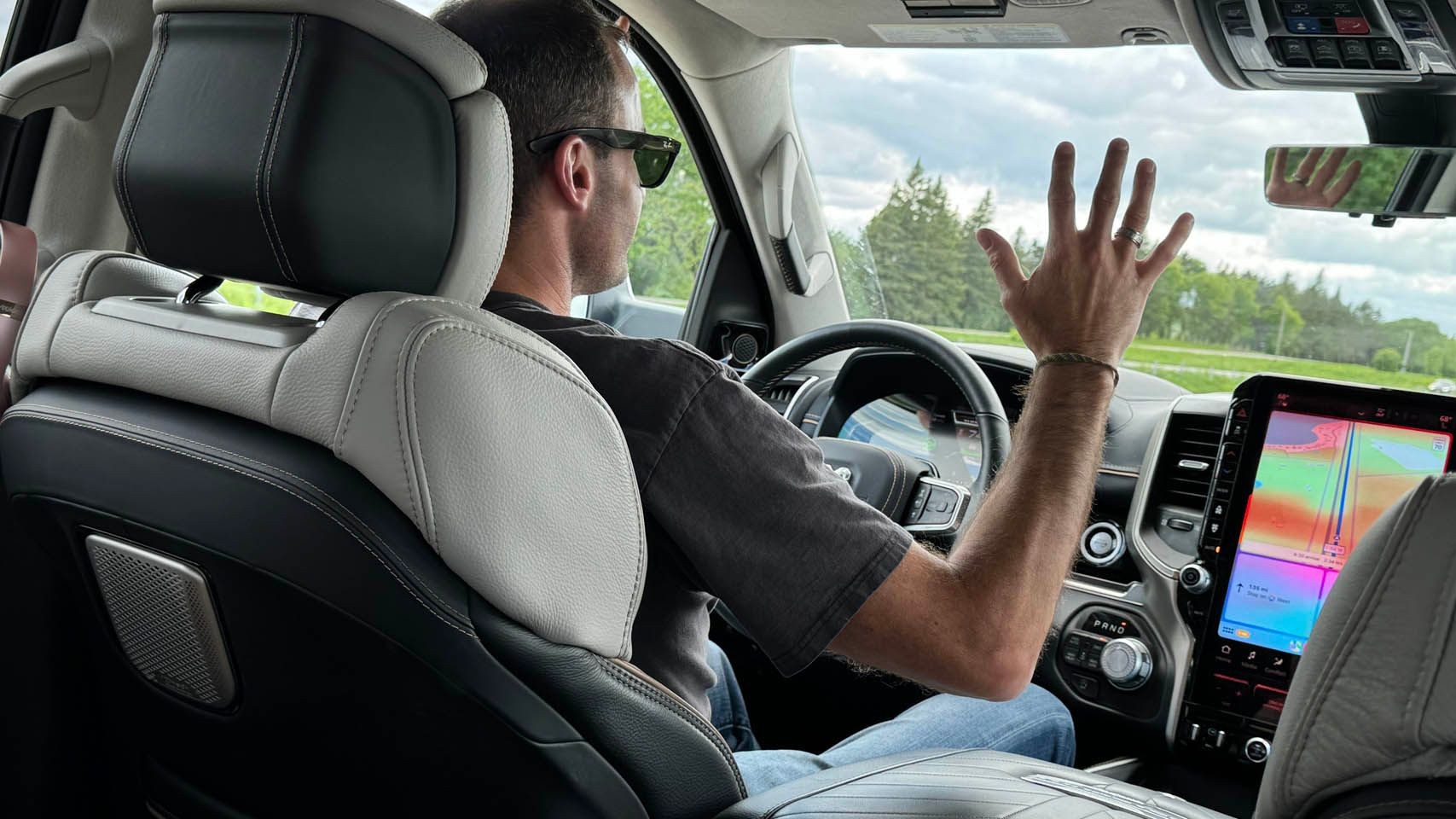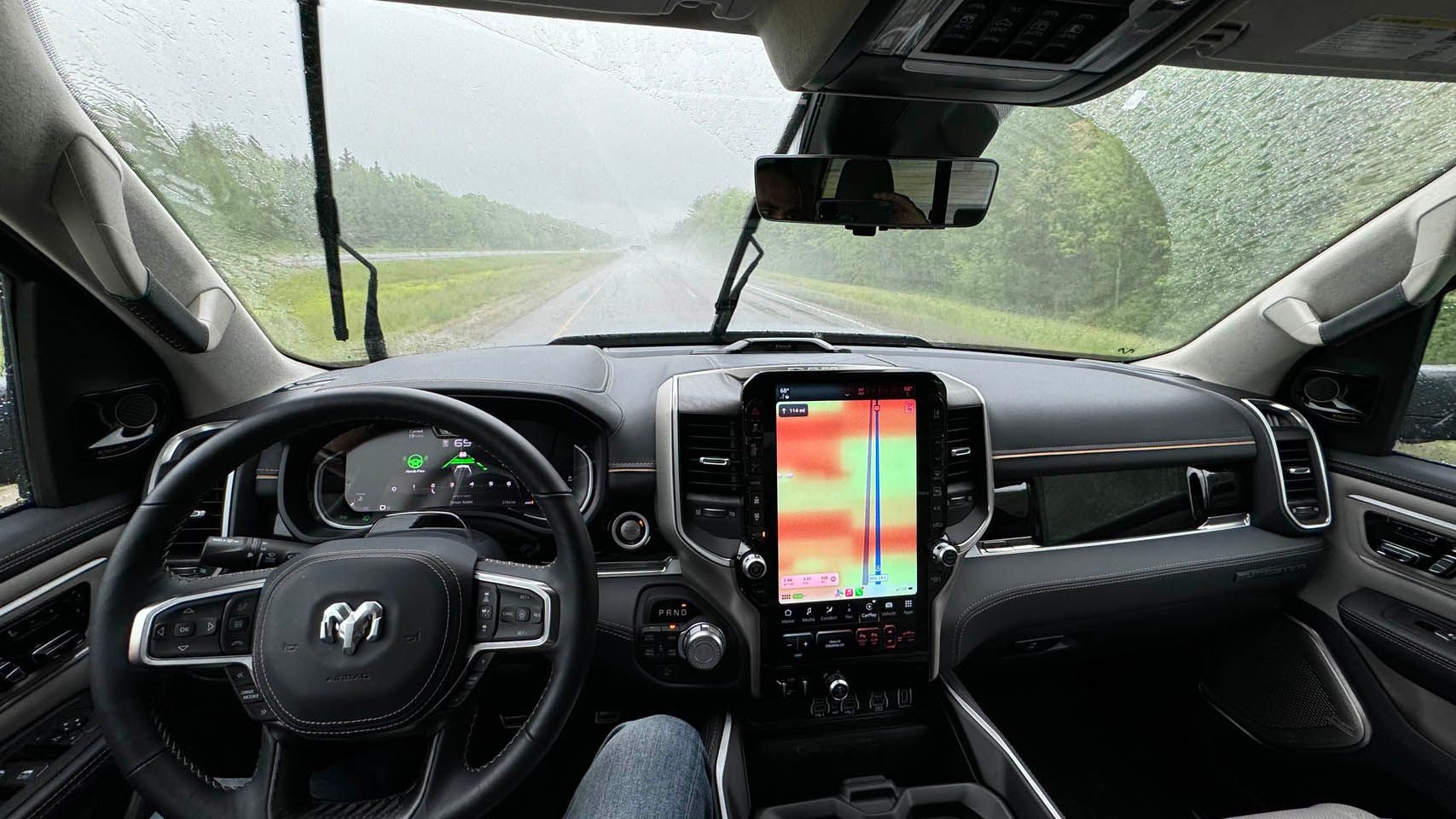-
Hands-Free Active Driver Assist works mostly as advertised
-
The system’s successor has already been announced
-
Stellantis isn’t promoting the system
It’s alright to be fashionably late, but you better arrive put together or with a heck of a story. In the case of Stellantis’ Hands-Free Active Driver Assist system, it’s neither.
Quietly launched in 2023 with no fanfare on certain Jeep Grand Cherokee models, and in February on the refreshed 2025 Ram 1500, the system is now in the hands of consumers. After two weeks and more than 1,700 miles of testing, I’m here to report Hands-Free Active Driver Assist takes third place among the domestic hands-free systems, even though it arrives two years after Ford's BlueCruise and seven years after GM’s Super Cruise. This is despite splitting the difference in hardware capability between those other two systems.
Stellantis Hands-Free Active Driver Assist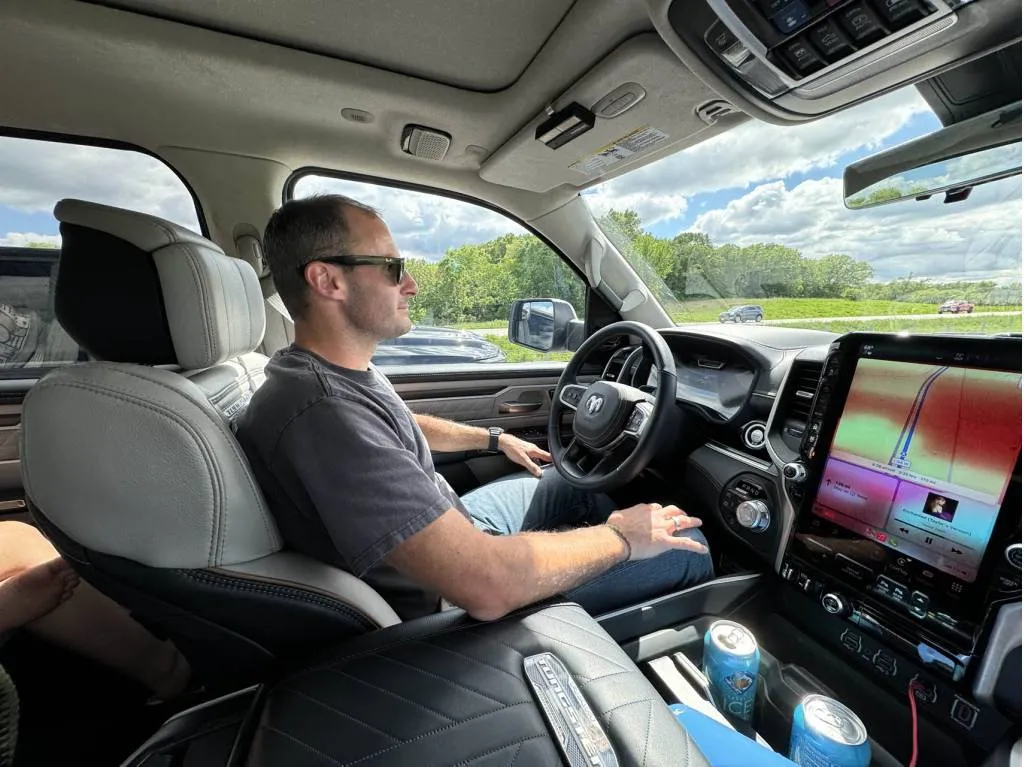
What is Hands-Free Active Driver Assist?
Hands-Free Active Driver Assist is Stellantis’ Level 2 hands-free driver-assist system. On mapped roads the system allows drivers to take their hands off the steering wheel at speeds of up to 85 mph, but the driver must continue to watch the road.
This means the driver is still in charge and fully responsible for what takes place behind the wheel. It doesn’t matter whether I’m eating a cheeseburger while the truck steers for me, I am liable.
The system only works on limited-access (no open cross-streets) divided highways that have been mapped by TomTom. Jeep’s website says that includes “over 125,000 miles of compatible roads.” GM’s system works on over 400,000 miles of road and will up that to about 750,000 miles by the end of 2025. Ford’s system works on 130,000 miles of mapped roads.
2025 Ram 1500 Tungsten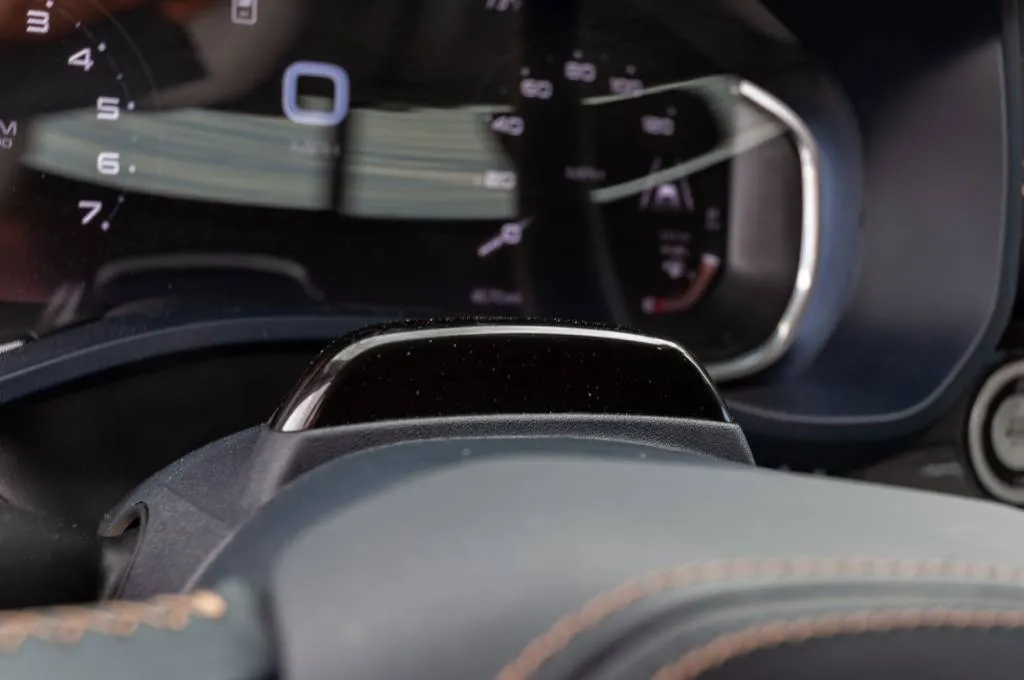
Hands-Free Active Driver Assist watches you vigilantly
An infrared camera on the steering column watches the driver’s eyes to ensure they are still paying attention. If the driver’s eyes wander from the road for more than a few seconds, the system will alert the driver to pay attention.
Stellantis gives drivers a short leash. During numerous hours of testing and messing around (for science purposes only) with the system parameters, I found that Stellantis gives drivers four or five seconds for their eyes to wander from the road. This falls between Ford’s system, which seems hard-set at four seconds, and GM’s system, which seems to have eased up over the years and allows for about double that amount of time.
2025 Ram 1500 Tungsten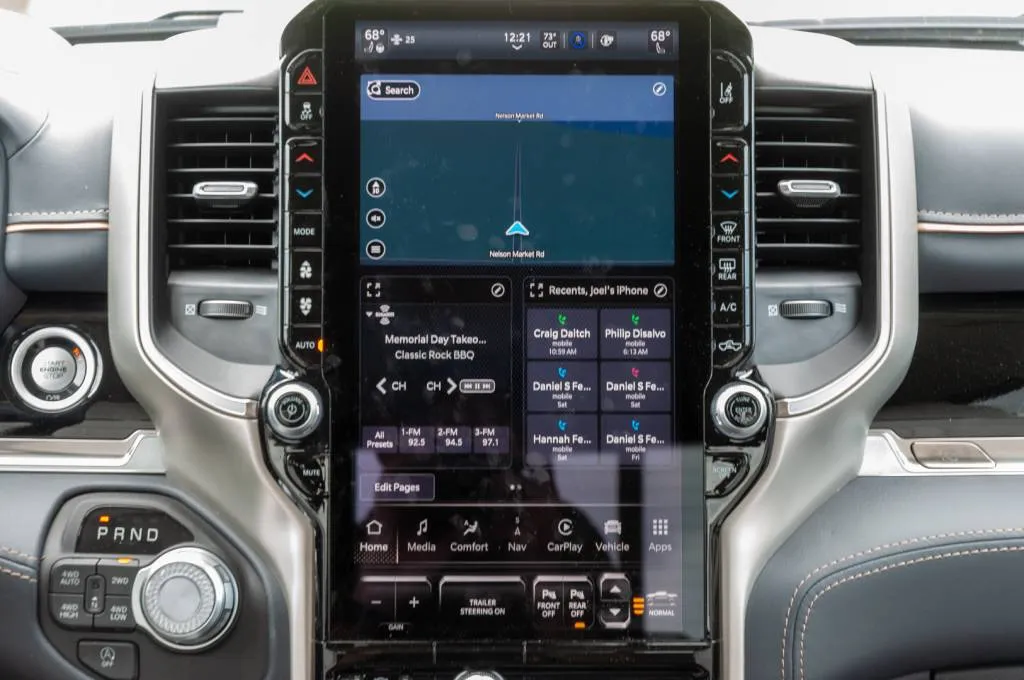
Hands-Free Active Driver Assist knows where the vehicle is…
…down to the lane. Like GM’s Super Cruise system, Hands-Free Active Driver Assist features an HD GPS receiver. A typical GPS receiver, which is what BlueCruise uses, places a vehicle on a road, but not in a specific lane, and is accurate to within 49.2 feet. According to General Motors, an HD GPS receiver places a car with 6.6 feet. That translates to the vehicle knowing which lane it’s in. Cameras and radar systems can’t see through cars to read which lane another vehicle is in.
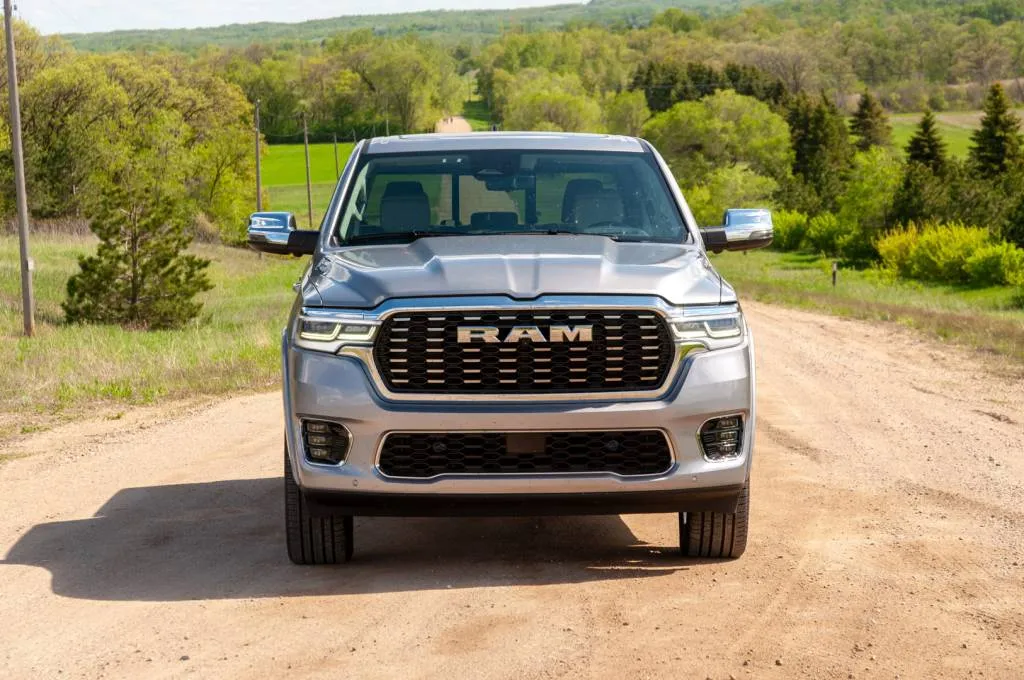
2025 Ram 1500 Tungsten
Hands-Free Active Driver Assist can only see so far ahead
When Hands-Free Active Driver Assist works it’s pretty good. At times it betters BlueCruise, but it never comes close to topping Super Cruise.
Like with Ford’s BlueCruise, it took minutes of working my way through Friday afternoon traffic heading out of the city for my wife and daughter, both of whom experience motion sickness, to tell me Hands-Free Active Driver Assist needed to be turned off.
The system uses a vehicle’s adaptive cruise control system cameras, radar unit, and programming for distance control. It’s not smooth in its application of the brake and throttle, and it can’t read the situation far enough ahead to see traffic building. When that happened, the system didn’t see the traffic until we hit the preset distance for the adaptive cruise control system to slow the vehicle down and/or apply the brakes.
I recognized the programming instantly as the same that’s found in my wife’s decade-old Jeep Grand Cherokee. My wife and daughter won’t let me use the adaptive cruise control in our Grand Cherokee in stop-and-go traffic for the same reasons they had me turn off Hands-Free Active Driver Assist in the 2025 Ram 1500.
The throttle and brake application issues could theoretically be recalibrated via an over-the-air software update, though I doubt they will be. More on that in a bit. The radar system’s inability to see traffic building ahead and do something about it is unlikely to change.
Hands-Free Active Driver Assist had no issue picking a virtual center line and sticking to it. This was an issue with BlueCruise when it launched, and has since been smoothed out with the 1.2 software update.
Both BlueCruise and Super Cruise scooch over to the shoulder a bit in the lane when passing large vehicles. The former moves over noticeably while the latter only moves over up to one inch, which is barely perceptible. This gives a bit of breathing room for those drivers who might be a bit sloppy with their lane discipline.
Throughout my time behind the wheel I couldn’t decide if the 2025 Ram 1500 was moving over toward the shoulder for safety. Despite asking Stellantis multiple times for confirmation whether the system does in fact move the vehicle over when passing other vehicles I’ve received no response. Maybe it does, or maybe I’m imagining things.
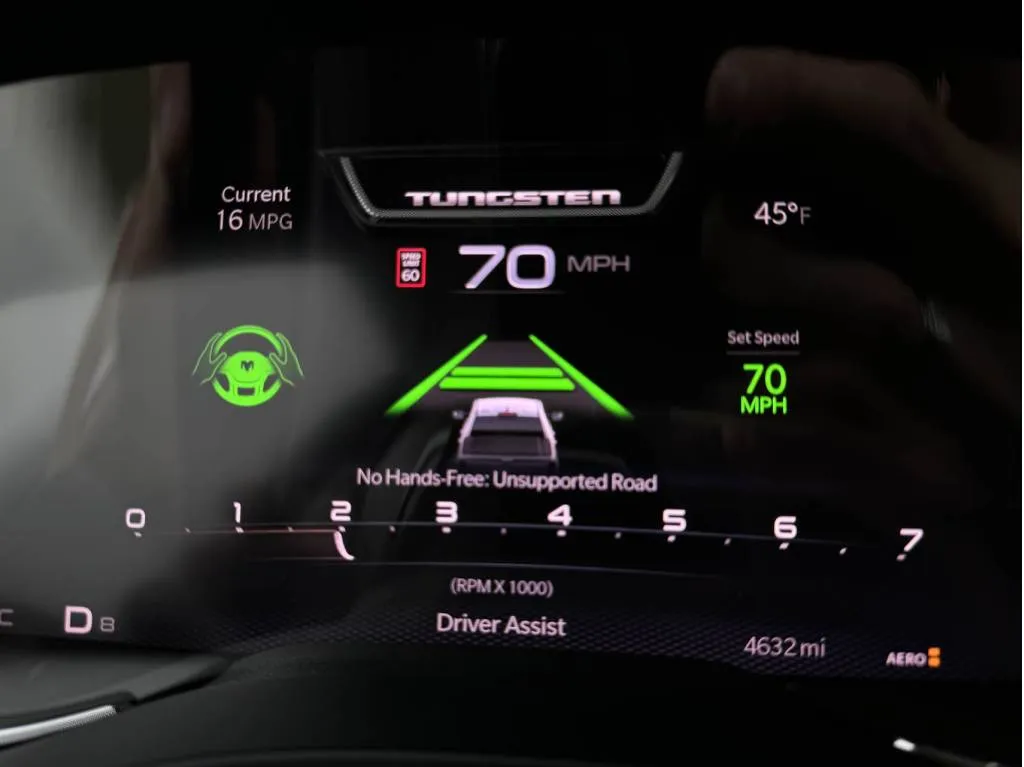
Stellantis Hands-Free Active Driver Assist
Hands-Free Active Driver Assist recognizes construction zones
The second the Ram 1500 I was partially piloting entered a road construction zone the gauge cluster lit up and acknowledged the zone. I was instructed to put my hands back on the wheel and take control.
The second the truck exited the construction zone, the system resumed control. This is a feat BlueCruise still seems incapable of pulling off even with the latest software. Super Cruise has always recognized when a vehicle enters construction zones and hands control to the driver, in my experience.
Stellantis Hands-Free Active Driver Assist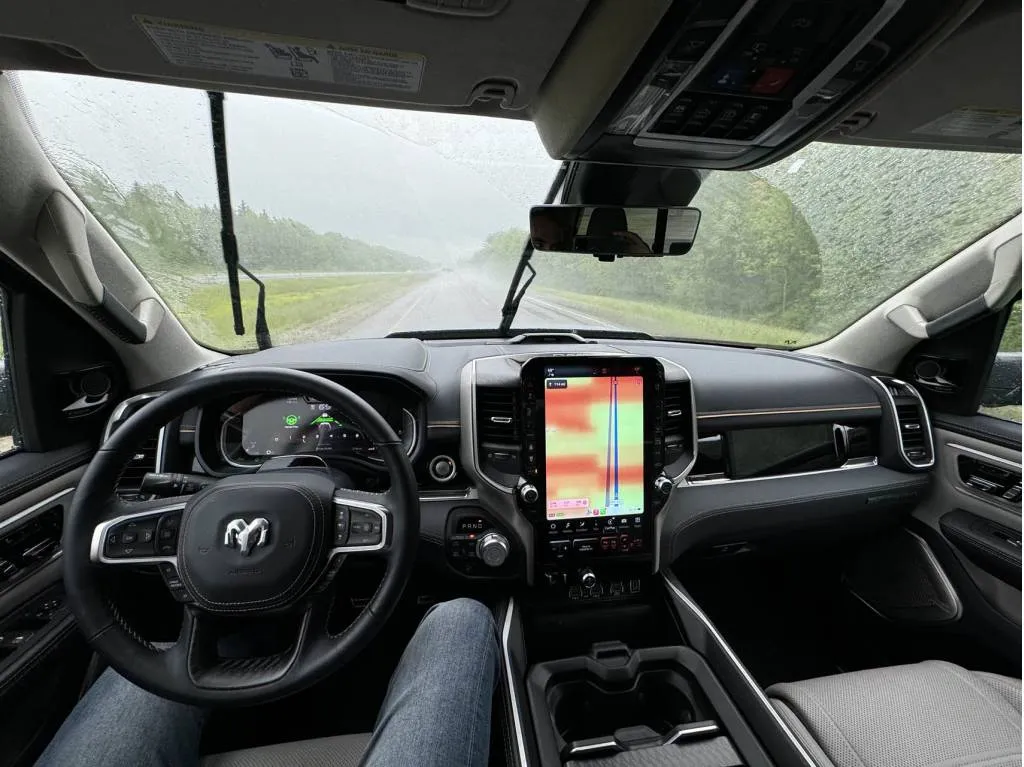
Hands-Free Active Driver Assist works in the rain
To the point of making me feel uncomfortable. BlueCruise and Super Cruise both work in the rain, to an extent, but if either system determines it can’t see properly it’ll hand back control to the driver.
Despite blasting through a torrential downpour that I could barely see through, Hands-Free Active Driver Assist remained engaged and was willing to blast down the road at a rate of speed that was probably too high for the conditions. If I can’t see through the rain going that fast it’s unclear to me how the camera can, even if the radar system can. This system uses both. Let the record reflect this testing was done without my family in the vehicle.
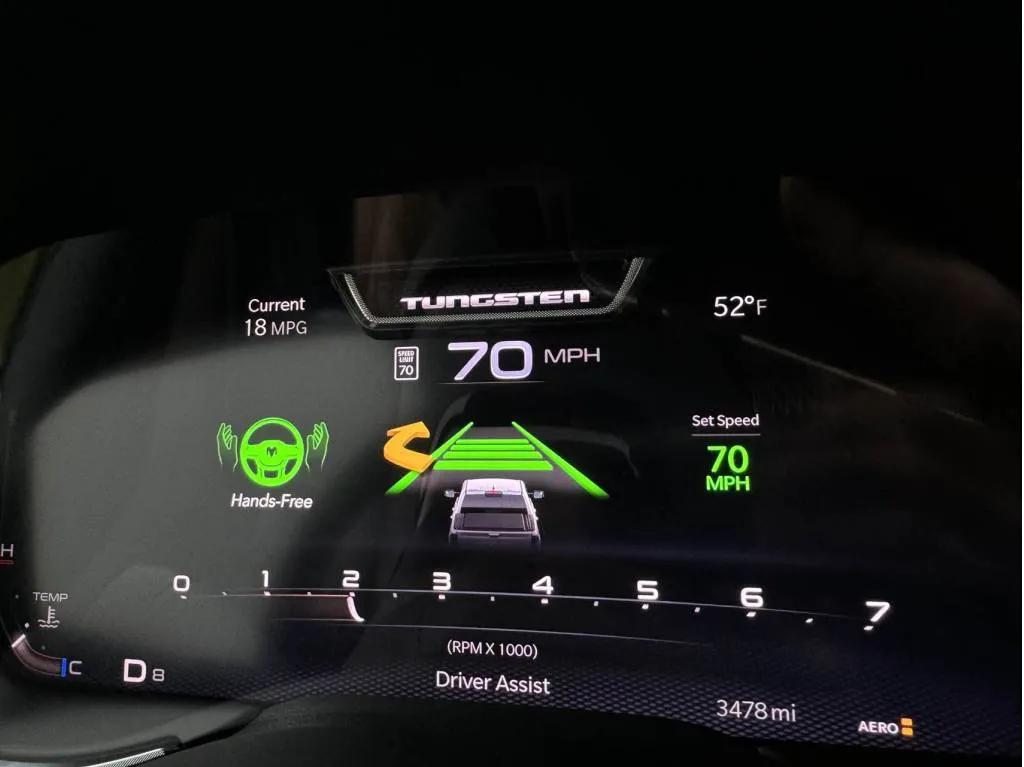
Stellantis Hands-Free Active Driver Assist
Hands-Free Active Driver Assist lane changes requires an assist
Super Cruise, BlueCruise, and Hands-free Active Driver Assist can all change lanes, but only Super Cruise can do it without driver involvement.
Like BlueCruise, Hands-Free Active Driver Assist requires the driver to tap the turn signal stalk to engage a lane change during hands-free driving. The system will do a quick assessment to ensure the lane change can safely happen then perform the lane change—well maybe.
About half the time the system executed the lane change perfectly. But the other half of the time it wouldn’t change lanes, seemingly for no reason, even in the middle of nowhere. It’s like the system, which is in its infancy, is already as capricious as a teenager. It’ll never live to see adulthood, as we'll soon see.
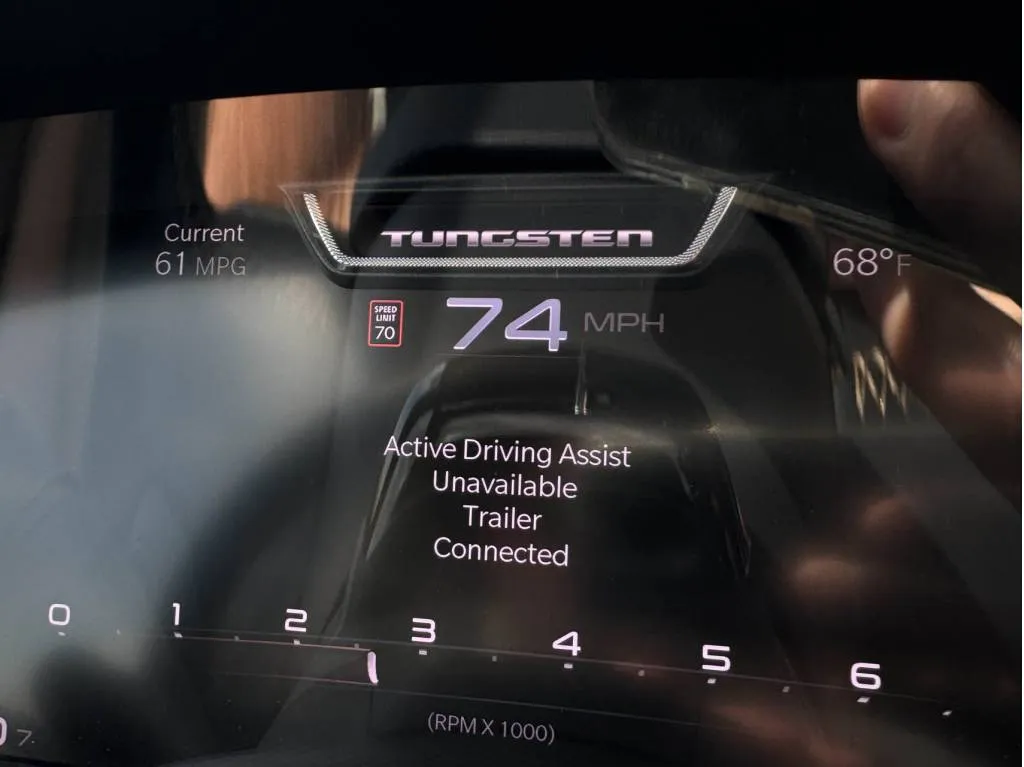
Stellantis Hands-Free Active Driver Assist
Hands-Free Active Driver Assist can’t tow
The second I hooked a boat up to the truck, the system knew it because I plugged in the trailer lights. The system turned off and noted it can’t be used while towing.
Super Cruise can be used while towing, and it works flawlessly even with 5,000 pounds of dual-axle trailer behind it. BlueCruise also can’t tow.
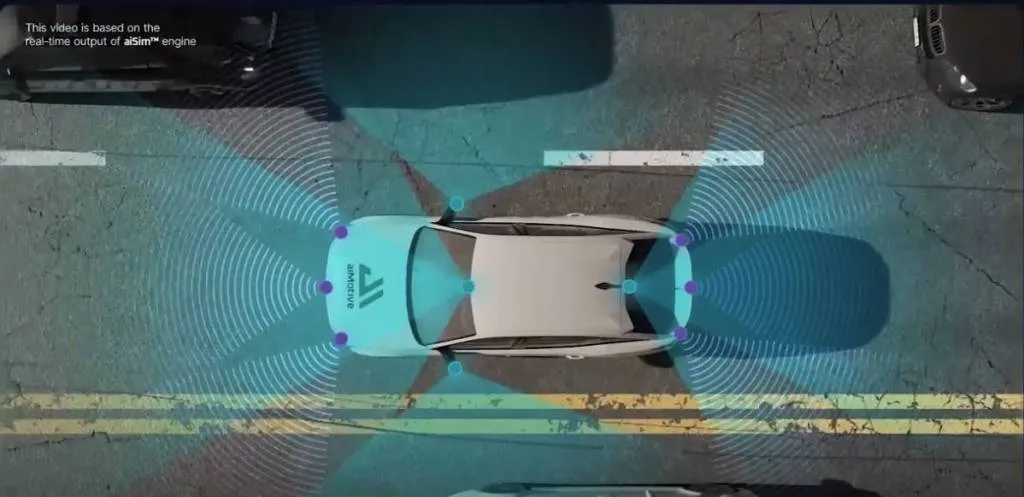
STLA AutoDrive
Hands-Free Active Driver Assist is DOA
In an awkward turn of events, Stellantis quietly announced its next-generation hands-free driver-assist system called STLA AutoDrive in June. Like Hands-Free Active Driver Assist, the new system will feature hands-free, eyes-on-the-road functionality, but it will also work with the driver’s hands off the wheel and their eyes off the road.
That last bit is key, as it makes it a Level 3 driver-assist system versus a Level 2 system like Hands-Free Active Driver Assist.
A Stellantis spokesperson told Motor Authority, “Hands-Free Active Assist technology will continue to be available for a period of time as we roll out the STLA AutoDrive platform, an overlap that is typical of new technologies.”
While true, most new platforms and technologies don’t replace the one that just launched months ago. Stellantis hasn't announced how long Hands-Free Active Driver Assist will be available or supported. STLA AutoDrive will be ready for production at the end of 2024 and arrive in cars in 2025.
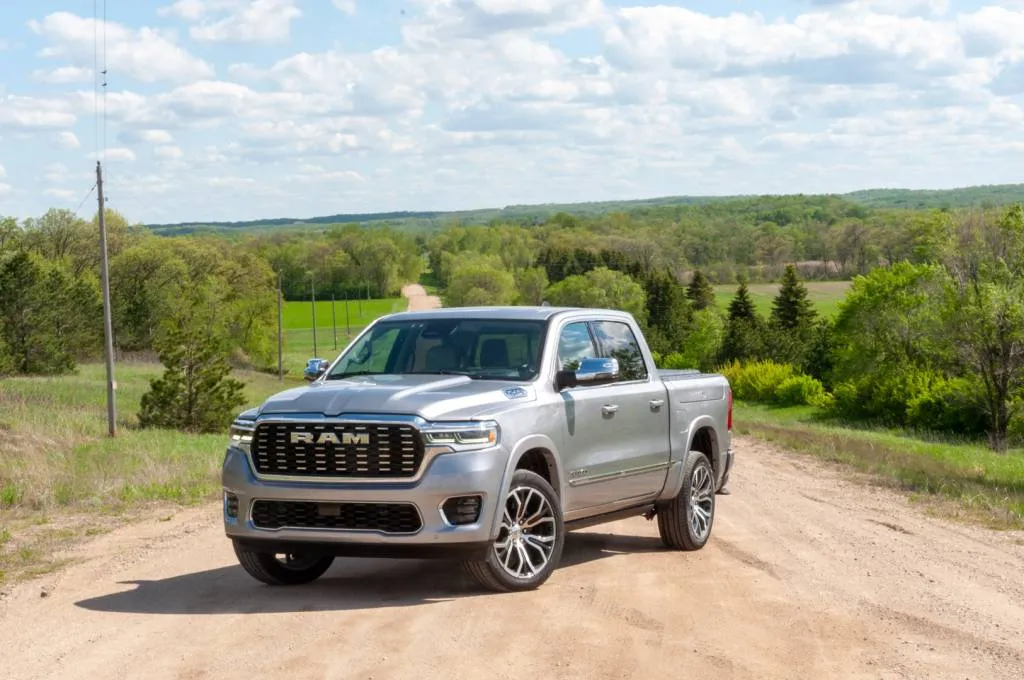
2025 Ram 1500 Tungsten
How much does Hands-Free Active Driver Assist cost and how does that stack up?
Which Ram you buy will determine how much it costs to get Hands-Free Active Driver Assist. On the Jeep Grand Cherokee it’s a $2,995 option, and after three years it’ll cost an undetermined price to keep the system working.
On the Ram it’s much more confusing. My loaded top-spec Tungsten model cost $91,550 including a $1,995 destination charge. Hands-Free Active Driver Assist was thrown in “for free” because basically everything’s standard. Buyers stepping down one rung to a Limited trim for just under $76,000 would need to option the $4,415 Limited Level A Equipment Group package to get the hands-free system. It’s bundled with everything from navigation and a head-up display to a 14.4-inch touchscreen. The system isn’t available on the Laramie trim or below, but it is offered on the TRX’s replacement, the RHO. There it’s bundled in a $9,995 RHO Level 1 Equipment Group package in a similar fashion as on the Limited. The RHO costs $71,990.
Ford democratized its system by spreading it across models far and wide from Explorers to F-150s and Mustang Mach-Es. In some models, including the Explorer, the hardware doesn’t cost money up front as it’s standard on certain trims; it requires a service fee of $75 per month or $800 per year after a 90-day free trial to enable it. Super Cruise ranges in price depending on the product, but it’s $2,200-$2,500 and then $25 per month after a 3-year trial.
Hands-Free Active Driver Assist isn’t a value and it’s not widely available in the Ram or Jeep lineups, but it works mostly as advertised. However, it doesn’t work better than a competitor that’s now seven years old. Perhaps the real story here is that the system is already being superseded by a next-gen system that’s launching early next year.
